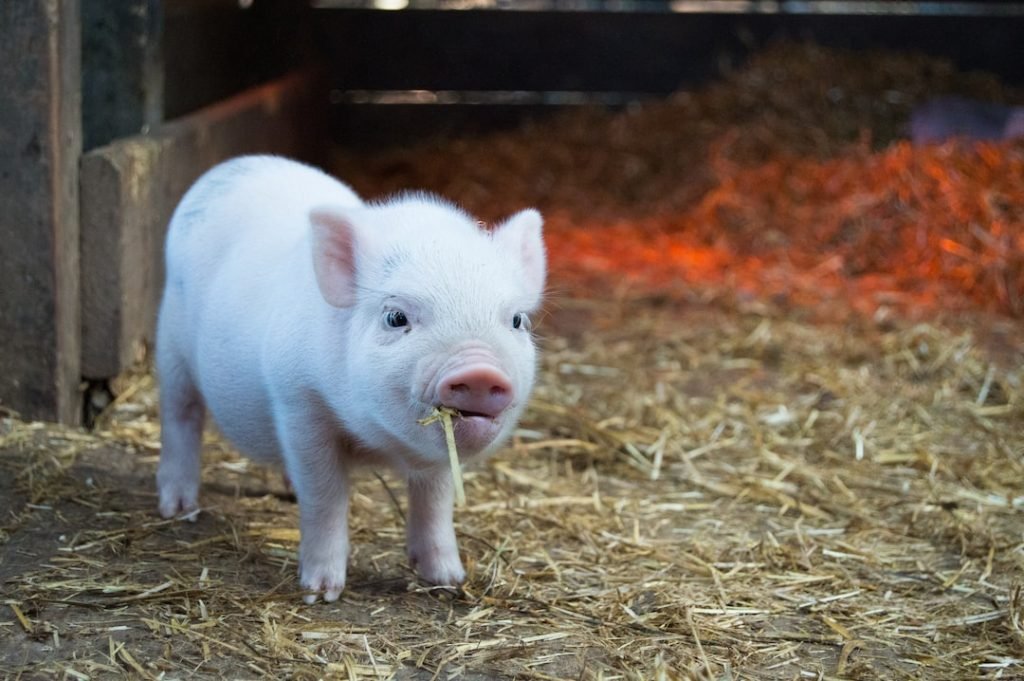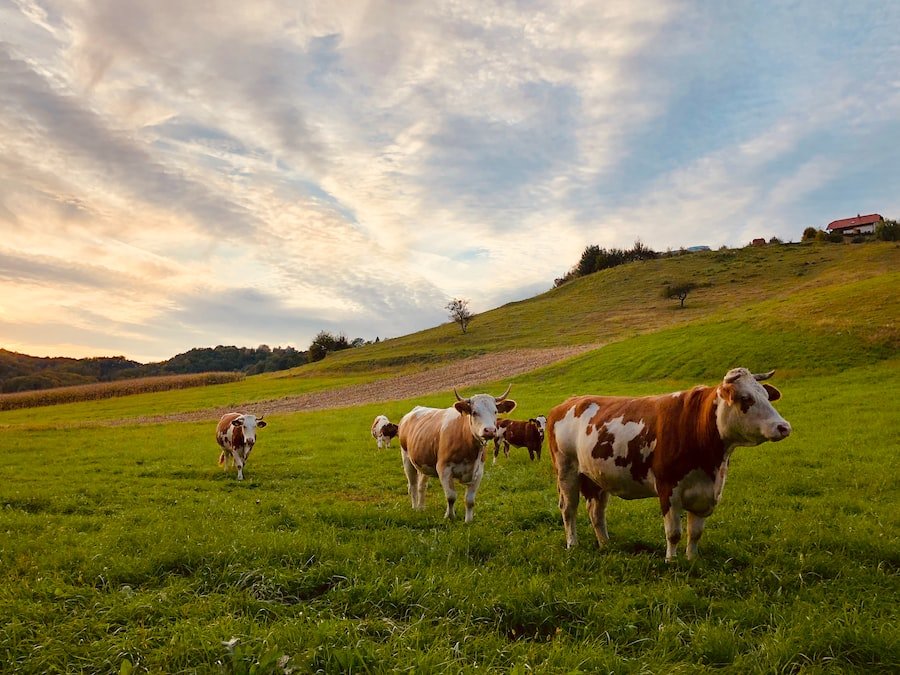

Agricultural Vocabulary: English for Farming
Agricultural vocabulary plays a crucial role in the world of farming and agriculture. It is the language that farmers, agricultural scientists, and industry professionals use to communicate and understand the various aspects of agriculture. Without a solid understanding of agricultural vocabulary, it would be challenging to navigate the complex world of farming and make informed decisions.
The history of agricultural language can be traced back to ancient civilizations where farming was a way of life. As humans began to cultivate crops and raise livestock, they developed a specialized vocabulary to describe the different practices and techniques involved in agriculture. Over time, this vocabulary evolved and expanded as new technologies and scientific advancements were made in the field of agriculture.
Table of Contents
ToggleCommon Farming Terms and Definitions
Farming is the practice of cultivating crops and raising livestock for food, fiber, and other products. It involves a wide range of activities such as planting, harvesting, and managing livestock. To understand farming better, it is essential to familiarize oneself with common farming terms.
Crop rotation is a farming technique where different crops are planted in a specific sequence on the same piece of land over several growing seasons. This practice helps improve soil fertility, control pests and diseases, and reduce soil erosion.
Irrigation is the process of supplying water to crops through artificial means such as sprinklers, drip systems, or canals. It is crucial in areas where rainfall is insufficient for crop growth.
Fertilization refers to the application of nutrients to the soil or plants to promote healthy growth. Fertilizers can be organic or synthetic and provide essential elements like nitrogen, phosphorus, and potassium.
Crop and Plant Terminology
Crops are plants that are cultivated for food, fiber, or other commercial purposes. They can be classified into various categories based on their characteristics and uses.
Hybrid crops are produced by crossbreeding two different varieties or species of plants to create offspring with desirable traits. These traits can include increased yield, disease resistance, or improved quality.
GMOs (Genetically Modified Organisms) are plants that have been genetically engineered to possess specific traits. This can involve the insertion of genes from other organisms to confer resistance to pests, herbicides, or improve nutritional content.
Organic crops are grown without the use of synthetic fertilizers, pesticides, or genetically modified organisms. Organic farming practices focus on maintaining soil health, biodiversity, and minimizing environmental impact.
Livestock and Animal Husbandry Vocabulary
Livestock refers to animals raised on farms for meat, milk, eggs, wool, or other products. Animal husbandry is the practice of breeding, raising, and caring for livestock.
Breeding is the process of mating animals with desirable traits to produce offspring with those traits. It involves selecting animals with superior genetics and managing their reproduction.
A feedlot is a confined area where livestock are fed a high-energy diet to promote rapid growth before being sent to market. Feedlots are commonly used in the beef and pork industries.
Pasture refers to a piece of land where livestock graze on grass or other vegetation. It provides a natural and sustainable source of food for animals.
Soil Science and Land Management Terms
Soil science is the study of soil as a natural resource and its role in supporting plant growth. Land management involves the sustainable use and conservation of land resources.
Erosion is the process by which soil is moved from one location to another by wind or water. It can lead to the loss of topsoil, which is essential for plant growth.
pH is a measure of the acidity or alkalinity of soil. It affects nutrient availability and microbial activity in the soil.
Tillage refers to the mechanical manipulation of soil to prepare it for planting or control weeds. Different tillage practices can have varying impacts on soil health and erosion.
Farm Equipment and Machinery Terminology

Farm equipment and machinery are essential tools used in agriculture to perform various tasks efficiently.
A combine is a machine used to harvest crops such as wheat, corn, or soybeans. It can cut, thresh, and clean the grain in one operation.
A tractor is a powerful vehicle used to pull or push agricultural implements and machinery. It is a versatile tool that can be used for plowing, planting, and hauling.
A plow is a farming implement used to turn over the soil and create furrows for planting. It helps break up compacted soil and incorporate organic matter.
Agricultural Business and Marketing Vocabulary
Agricultural business refers to the commercial activities involved in producing, processing, and distributing agricultural products. Marketing is the process of promoting and selling these products to consumers.
A commodity is a raw material or primary agricultural product that can be bought and sold, such as wheat, corn, or soybeans.
The supply chain refers to the network of organizations involved in the production, processing, and distribution of agricultural products. It includes farmers, processors, distributors, retailers, and consumers.
Market analysis involves studying market trends, demand, and competition to make informed decisions about pricing, production levels, and marketing strategies.
Sustainable Farming and Environmental Terminology
Sustainable farming focuses on practices that are environmentally friendly, socially responsible, and economically viable. It aims to minimize negative impacts on the environment while maintaining productivity.
Conservation refers to the protection and sustainable use of natural resources such as soil, water, and biodiversity. It involves practices like cover cropping, crop rotation, and water conservation.
Biodiversity refers to the variety of plant and animal species in an ecosystem. It is important for maintaining ecosystem health and resilience.
Carbon footprint is a measure of the greenhouse gas emissions produced by an individual or organization. In agriculture, it can be reduced through practices like carbon sequestration, renewable energy use, and efficient resource management.
Agricultural Safety and Health Vocabulary
Agricultural safety and health focus on preventing injuries, illnesses, and fatalities in the agricultural industry.
PPE (Personal Protective Equipment) refers to clothing and equipment worn to protect workers from hazards such as chemicals, noise, and physical injuries.
Ergonomics is the study of designing workspaces, tools, and equipment to fit the capabilities and limitations of workers. It aims to prevent musculoskeletal disorders and improve productivity.
Chemical exposure refers to contact with hazardous substances such as pesticides, fertilizers, or cleaning agents. It can pose health risks to farmers and farm workers if not properly managed.
Regional and Cultural Variations in Agricultural Language
Agricultural language can vary significantly from region to region and across different cultures. This is influenced by factors such as climate, geography, farming practices, and cultural traditions.
For example, in the United States, the term “corn” typically refers to maize, while in the United Kingdom, “corn” refers to wheat or other cereal crops. Similarly, the term “paddy” is used in Southeast Asia to refer to a flooded field where rice is grown.
Cultural variations can also be seen in the names of crops and livestock. For instance, in India, “brinjal” is the term used for eggplant, while in the United States, it is commonly referred to as “eggplant.”
In conclusion, agricultural vocabulary is essential for anyone involved in farming or agriculture. It allows for effective communication and understanding of the various aspects of agriculture. From common farming terms to specialized terminology in areas such as crop science, livestock management, soil science, farm equipment, business and marketing, sustainable farming practices, safety and health measures, and regional variations – agricultural vocabulary covers a wide range of topics.
By familiarizing oneself with agricultural vocabulary, individuals can better navigate the world of farming, make informed decisions, and contribute to the sustainable and efficient production of food and other agricultural products. It is a language that continues to evolve as new technologies and practices emerge in the field of agriculture, making it important to continue learning and using agricultural language.
If you’re interested in expanding your language skills beyond agricultural vocabulary, you might find this article on “Norwegian for Travelers: Key Words and Phrases for Your Next Trip” helpful. It provides essential vocabulary and phrases that can be useful when traveling in Norway. Whether you’re asking for directions, ordering food in a restaurant, or simply introducing yourself in a business setting, this article covers it all. So, if you’re planning a trip to Norway or just want to enhance your language skills, check out this article for some practical tips.
FAQs
What is Agricultural Vocabulary?
Agricultural Vocabulary refers to the specific terms and phrases used in the farming industry to describe various aspects of agriculture, such as crops, livestock, equipment, and techniques.
Why is it important to learn Agricultural Vocabulary?
Learning Agricultural Vocabulary is important for farmers, agricultural workers, and anyone involved in the agriculture industry. It helps to improve communication and understanding between individuals in the industry, and it also helps to ensure that important information is conveyed accurately and effectively.
What are some common Agricultural Vocabulary terms?
Some common Agricultural Vocabulary terms include crop rotation, irrigation, fertilization, livestock, harvest, plow, tractor, and pesticide.
How can I learn Agricultural Vocabulary?
There are many ways to learn Agricultural Vocabulary, including taking courses or classes, reading books and articles on the subject, and practicing with other individuals in the industry. Online resources and apps can also be helpful for learning and practicing Agricultural Vocabulary.
What are some benefits of using Agricultural Vocabulary?
Using Agricultural Vocabulary can help to improve communication and understanding between individuals in the agriculture industry, which can lead to more efficient and effective farming practices. It can also help to ensure that important information is conveyed accurately and effectively, which can lead to better crop yields and healthier livestock.
If you want to learn Norwegian, you can register for classes here. We look forward to hearing from you and helping you become fluent in Norwegian.





